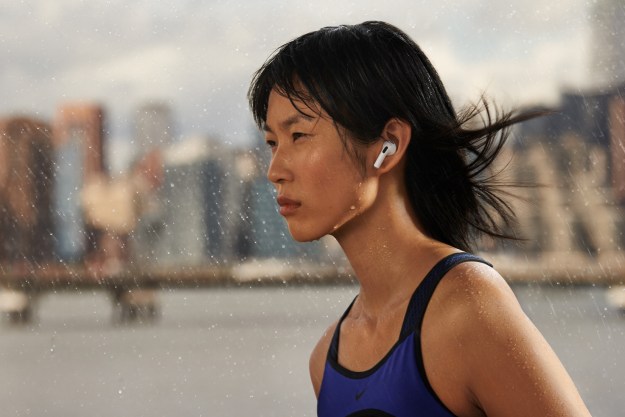After much ado, Apple has finally unleashed its new iPhone 7 and, as expected, the company has done away with the 3.5mm analog jack. For better or for worse, Apple has gone digital, offering two primary ways to play at launch. Apart from an included 3.5mm adaptor, those options include the new Lightning connected EarPods that will come packaged with your iPhone 7 or iPhone 7 Plus, and the fully wireless new AirPods, which won’t. We don’t have a lot to go on yet regarding Apple’s new wireless wonders, but here’s what we know so far.
The big key to Apple’s new plan for a fully wireless world is the W1 chip. The all-new, high-performance chip has long been in the works, and we’ve heard plenty of rumors about how it will function. Today, however, the operative word is efficiency. The W1 chip promises efficient wireless transference of your audio, which helps the new AirPods reach impressive battery life of a claimed five hours of playback time per charge.
That’s especially impressive considering that just about every pair of fully autonomous wireless earbuds on the market (aside from Bragi’s new model) last only around three hours on a charge. Still, five hours isn’t a ton of time if you’re out in the woods or on an airplane, so the AirPods will follow others on the market by offering a case with charging capabilities. Apple again impresses here, offering 24 hours of playback time from its battery case, outdoing most other fully wireless entries by around 10-12 hours.

As for the AirPods themselves, Apple has loaded these shower head-shaped buds with a ton of features and gadgets inside. Beneath the surface, the AirPods house dual optical sensors that can sense when they’re in your ears to pause and play music, dual voice accelerometers that detect when you’re speaking automatically, dual microphones (at the top and bottom of the bud), an antenna, a battery, and of course, a W1 chip inside.
Loading each AirPod with all that tech is again a break from what we’ve seen from most headphones of this kind in the past — in most cases, the right earpiece holds most of the tech and then sends the necessary information to the left side. The new method allows the AirPods to do some cool things, including dropping either one of the AirPods to speak hands-free, which, thanks to all those sensors on board, will automatically reroute sound to just the earpiece you’re using.
In addition, Apple is hoping to appease those angered about the lack of a headphone jack by making the AirPods easy to use and easy to setup. Apple says the earphones will connect to your iPhone with a single tap, and don’t need “pairing or unpairing” afterward. What’s more, Apple says the AirPods will auto connect to all of your Apple devices using iCloud once you set them up.
Of course, as we expected, all of this comes at a price — Apple won’t be bundling the AirPods with any of its devices anytime soon. To break away from the Lightning jack, you’ll have to pony up $159. Pricey for most basic users, but considering most fully wireless earbuds start at $250-300, it’s another appeasement to those angry about the iPhone 7’s lack of a jack.
The new AirPods will ship sometime in late October, alongside the iPhone 7 and
Editors' Recommendations
- AirPods 4: Everything we know about Apple’s next wireless earbuds
- Apple lets AirPods Pro owners upgrade to USB-C
- New AirPods teased for 2024, to little surprise
- Apple has upgraded the AirPods Pro with lossless audio, sort of
- Second-generation AirPods Pro have USB-C now, too


